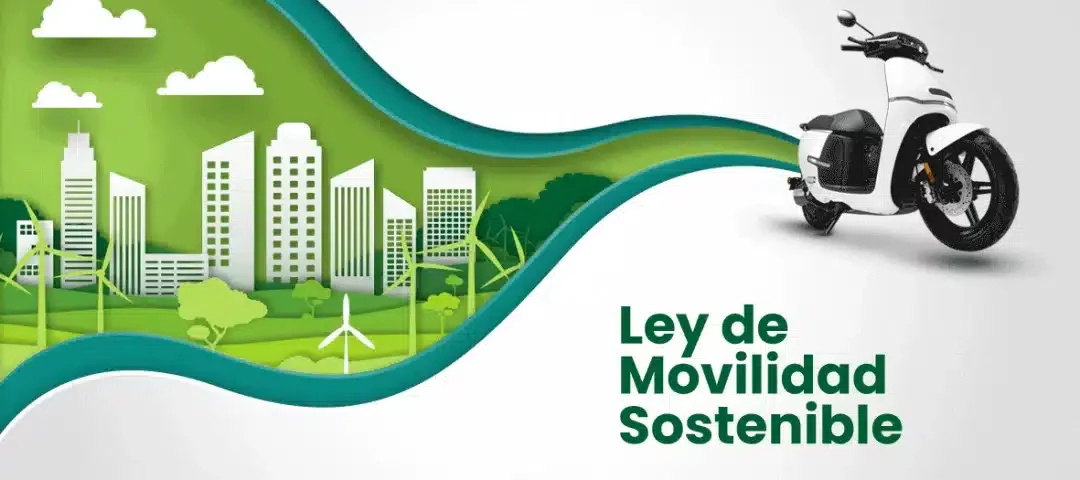The approval of the Sustainable Mobility Law seems to be a near reality after years of debates and demands. A necessary law in which all social actors will be involved: companies, citizens and public administrations. A law that will favor the economic transition to a sustainable model and for which we start with an advantage: there are already (we exist) solutions that will favor this adaptation and transformation for those companies in need of solutions that do not imply impossible investments at a time of economic and energy uncertainty.
The Sustainable Mobility Act has been in the air for a long time. We have heard or read a lot about it, but beyond what the draft bill says about the implications that the implementation of Low Emission Zones in towns with more than 50,000 inhabitants will bring with itwhich will come into force on January 1, 2023, little is really known about this new regulation and its environmental and social impact.
Terms such as sustainable mobility or electric and hybrid vehicles are the ones that monopolize many of the informative spaces, but the reality is that this regulation is already here and it is much more profound. Just a few weeks ago, on November 14, the Minister of Transport, Mobility and Urban Agenda, Raquel Sanchez, in the framework of the III Observatory of Mobility of a national newspaper, He stressed that the Draft Bill of the Sustainable Mobility Law will finally reach the Congress of Deputies before the end of the year for its prompt approval, since “the Council of Ministers will give the green light to the text in second reading in the coming weeks”.

Laws, in this sense, must always be understood not as a universal or eternal solution to a specific reality, but as a step in a direction (some will consider it correct and others will not) that aims to address a situation that needs to be corrected. And this regulation is just that, a step that had to be taken, but which will see its results and fruits supported by other courses of action; in this case, we are talking about the Sustainable and Connected Mobility Strategy 2030 and the Recovery, Transformation and Resilience Plan, with which it is intended to advance in the decarbonization and digitization of the mobility sector. In short, it is an interconnected whole that looks towards the same point.

One of the main aspects that this regulation will address is to prioritize active mobility. (pedestrians, bicycles or other personal mobility vehicles -PMVs-), facilitating alternatives to private mobility through on-demand public transport systems and collaborative or shared mobility;and make it mandatory for companies with more than 500 employees to prepare and have sustainable mobility plans in placeThe company has been able to provide the movement previously indicated, or with hybrid or remote work models. This means that large companies will have to find strategic allies to help them implement and execute sustainable mobility plans with private motosharing fleets, for example, or through shared mobility systems with zero-emission vehicles.
In this sense, or from this point of view, the legislator is placing mobility, for the first time in the history of Spain, at the level of a social right. Thus, this vision is the one that mainly shows us to what extent the regulation intends to have a social and environmental effect, since it establishes a series of responsibilities to be faced by the administration as guarantor of compliance with the law it approves, but it also attributes to companies and citizens a series of duties without which the effects of the law would have no impact, or at least a much lesser one than necessary; We cannot forget that 27.5% of emissions come from transport (25% more than the EU average), 70% of which are produced in cities.
These data shed a clear light on the problems we are facing and obtaining more and more detailed information is crucial to alleviate them without leaving behind the necessary economic growth, so the transition to an increasingly “greener” or less polluting mobility has to be made alongside companies and citizens.; It must be an environmental and economic transition so that our growth is also sustainable and our productive fabric increasingly relies on environmentally “healthy” solutions. It is important to emphasize, at this point, that the draft bill itself stresses that “public administrations will promote the collection of information to improve knowledge of the environmental impacts of transport”; in other words, the obligation to calculate the carbon footprint of the business or commercial exercise.
Undoubtedly, this law must be received as a milestone with a clear vision of the future, of the world we will leave to future generations, and as a tool with which it will be easier and more efficient to implement the Safe, Sustainable and Connected Mobility Strategy 2030, which places special emphasis on what was underlined above: safety, sustainability (social, economic and environmental) and connectivity.

It is this last aspect, that of connectivity, which will be essential for companies and citizens to adopt and contribute satisfactorily to the new reality that this regulation will bring about, but we are starting from an advantageous position. There are already solutions that will help and accompany, in this transition, companies or economic and business sectors that are not prepared at this time or those that find it very costly in terms of investment to adapt. Digitization and technological progress are needs that are already being met by companies such as PandaGo, the first sustainable mobility platform for companies and leader in renting motorcycles and zero emission vehicles,to give the closest example I have, and through which you can develop and formalize the entire process of hiring electric vehicles and operational management of fleets in an efficient, digital and fast way.

There is no doubt that many companies will have to seek or require this type of services to carry out their tasks and business normally, especially considering that in towns with more than 50,000 inhabitants it will not be possible to circulate, at least in the central almonds, with vehicles that do not have a low environmental impact. And the use of these solutions, besides being necessary, are positive for any company, since they have (we have) the ability to measure both the economic impact (in terms of fuel savings) and environmental impact (in terms of avoided greenhouse gas emissions); all this without taking into account that companies are given a sustainable “label” that will open the door to other types of support and users.
In short, we understand, as one of the actors involved and that will favor the development of this regulation, that the enactment of the new Sustainable Mobility Law is necessary from a social, environmental and credibility point of view as a country before the agreements reached and committed to with our European partners; undoubtedly, it will have a great impact at a national level reducing the emissions generated and thus helping to create more sustainable cities.
They trust us






